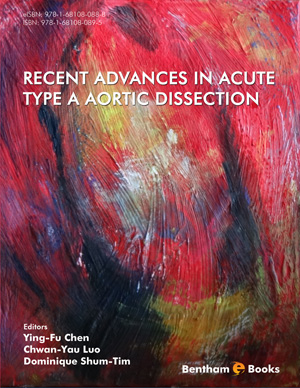Abstract
Acute aortic dissection is the most lethal cardiovascular disease. Despite improvements in diagnosis, surgical techniques, anesthetic techniques, organ protection, and perioperative management, surgery for acute type A aortic dissection still has high morbidity and mortality rates, particularly in cases in which the aortic root is involved. The surgical management strategy of choice for aortic root repair remains controversial. The important characteristic of this strategy is to judge which root reconstruction procedure should be done and whether the aortic valve should be preserved or replaced. The choice is based on saving the patient’s life and reducing the likelihood of reoperation. Other critical factors include the extent of aortic sinus involvement, the magnitude of regurgitation, and the surgeon’s experience and skill.
Keywords: Acute aortic dissection, Anticoagulation, Aortic insufficiency, Aortic root, Aortic valve replacement, Aortic valve spare, Bentall procedure, Bioglue, Button technique, Cabrol procedure, Commissural resuspension technique, Composite valve graft, Coronary artery orifices, Enclosed suture technique, Gelatin-resorcinol-formaldehyde, Intraoperative TEE, Marfan syndrome, Sinotubular junction, Sinuses of Valsalva, Wheat procedure.






















